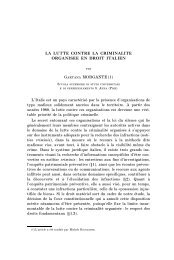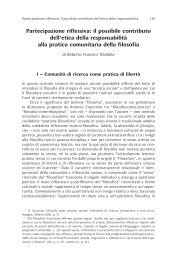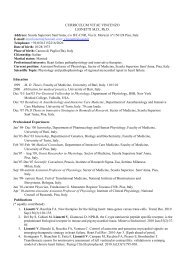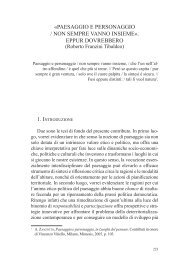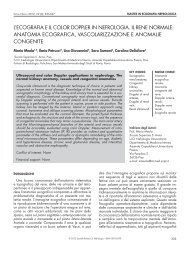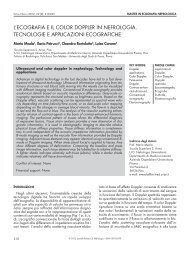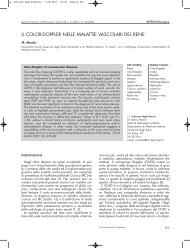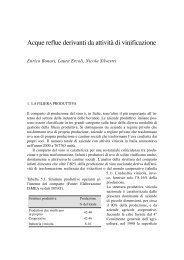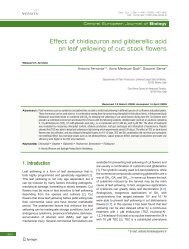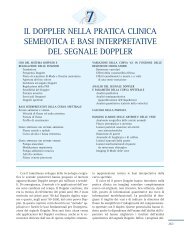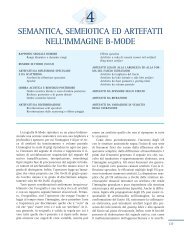A fast and accurate method for evaluating joint second-order PMD ...
A fast and accurate method for evaluating joint second-order PMD ...
A fast and accurate method for evaluating joint second-order PMD ...
Create successful ePaper yourself
Turn your PDF publications into a flip-book with our unique Google optimized e-Paper software.
FORESTIERI: A FAST AND ACCURATE METHOD FOR EVALUATING JOINT SECOND-ORDER <strong>PMD</strong> STATISTICS 2943<br />
Fig. 1. Pdf of <strong>for</strong> a 15-, 20-, <strong>and</strong> 30-ps mean DGD. Circles are obtained<br />
from (2), <strong>and</strong> solid lines from (3).<br />
where means expectation, is the mean DGD. A comparison<br />
of (2) <strong>and</strong> (3) is shown in Fig. 1.<br />
Even if the pdf of all the quantities appearing in (1) is<br />
known, this is not enough as, <strong>for</strong> averaging, the <strong>joint</strong> pdf<br />
is needed. 1 As <strong>and</strong> is known [14],<br />
we focus on , which is the unknown quantity we need.<br />
Following [15], we let<br />
<strong>and</strong> denote by<br />
the normalized <strong>PMD</strong> vector <strong>and</strong> its derivative, respectively.<br />
Parameter is the st<strong>and</strong>ard deviation of each one of the<br />
components of the dispersion vector . In the reference frame<br />
whose first axis is coincident with , the characteristic function<br />
of the conditional <strong>joint</strong> pdf<br />
of the components 2 is [15]<br />
where<br />
is the three-dimensional (3-D) trans<strong>for</strong>m<br />
variable <strong>and</strong> .<br />
Obtaining a closed-<strong>for</strong>m expression <strong>for</strong> by analytical<br />
inversion of (7) proved to be a <strong>for</strong>midable task, <strong>and</strong> on the other<br />
side, a numerical inversion through a 3-D <strong>fast</strong> Fourier trans<strong>for</strong>m<br />
1For brevity, the pdf arguments are sometimes omitted.<br />
2In the following ‘1“ denotes transpose.<br />
(5)<br />
(6)<br />
(7)<br />
(8)<br />
(FFT) is not feasible as, by simply <strong>and</strong> optimistically using 64<br />
points one-dimensional (1-D) FFTs, a total of about 7 000 000<br />
multiplications should be carried out, which does not exactly<br />
account <strong>for</strong> a <strong>fast</strong> <strong>and</strong> efficient evaluation.<br />
Analytical approximations <strong>for</strong> the <strong>joint</strong> pdf of <strong>and</strong> are<br />
reported in [14] <strong>and</strong> [15], but, even if <strong>second</strong>-<strong>order</strong> moments are<br />
correctly reproduced, they greatly underestimate the tails<br />
<strong>and</strong> there<strong>for</strong>e are not suitable <strong>for</strong> <strong>PMD</strong>-induced penalties evaluation<br />
in compensated systems.<br />
Regarding the inversion of (7), as shown in Appendix A,<br />
after changing to spherical polar coordinates, the<br />
circular symmetry of one of the angle coordinates allows that<br />
angle dimension to be easily integrated in closed <strong>for</strong>m, <strong>and</strong>,<br />
after a suitable trans<strong>for</strong>mation, the <strong>joint</strong> pdf of <strong>and</strong><br />
, conditional upon , can be written as 3<br />
where<br />
(10)<br />
Hence, to evaluate (9), we have to numerically per<strong>for</strong>m a twodimensional<br />
(2-D) integral, but a very difficult one, as both<br />
<strong>and</strong> the integr<strong>and</strong> in (10) have an oscillatory nature.<br />
Indeed, evaluation of through (9) over a grid<br />
of 100 100 points, covering the tails down to about ,<br />
requires from a few hours to several days of computing time<br />
on a <strong>fast</strong> processor, depending on . The higher the value of<br />
with respect to , the lesser the required time to obtain a<br />
prescribed accuracy. The inner integral (10) is the most critical<br />
one, <strong>and</strong> we tried several numerical integration <strong>method</strong>s to<br />
evaluate it, including evaluation through FFT, but the most efficient<br />
turned out to be a recursive one based on the determination<br />
of a set of subintervals , , of (0,1)<br />
such that , , <strong>for</strong> which 8- <strong>and</strong> 16-points Gauss<br />
quadrature <strong>for</strong>mulas give results differing by less than a prescribed<br />
accuracy . Denoting by , the approximate<br />
value of the integral on interval given by the -point<br />
Gauss <strong>for</strong>mula, (10) is approximated as ,<br />
where , <strong>for</strong> ,<br />
<strong>and</strong> are found by the following recursive procedure: i) initially<br />
; ii) <strong>for</strong> , is successively set to<br />
, , until the prescribed<br />
accuracy is attained in ; <strong>and</strong> iii) the procedure completes<br />
when accuracy is obtained <strong>for</strong> .<br />
III. EVALUATING THE JOINT PDF FOR<br />
As already pointed out in Section II, the numerical evaluation<br />
of (9) is not a trivial task. In this section, we will develop a<br />
<strong>method</strong> that turns out to be very efficient in the case<br />
, other than evidencing a key feature of the inner integral<br />
in (10).<br />
3 We moved the conditioning on from the subscript to avoid clutter.<br />
(9)



